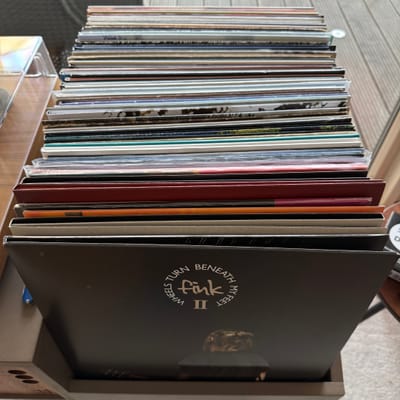Five Years, 250 Editions: What I've Learned from Writing a Weekly Newsletter

Do newsletters have birthdays? If they do, mine is about to turn five.
It started with a layoff.
When LinkedIn let me go five years ago, I wanted to stay connected with the incredible people I'd met there. So I did what any reasonable person does when facing professional uncertainty.
I started a newsletter.
The plan was simple. Share some interesting things I discovered each week. No grand vision, no monetisation strategy, just a way to maintain relationships and satisfy my own curiosity.
Now, 250 editions later, I'm surprised by what this little experiment has taught me about writing, readers, and the strange alchemy of showing up consistently.
Before I jump in, a reminder that you can sign up here.
What 250 Weeks of Publishing Taught Me
- Consistency is your superpower. Same day, same time, every week. This predictability isn't just about reader expectations—it's about personal discipline. What felt impossible in year one (where do I find the time?) became automatic by year three. Routine transforms good intentions into reliable habits.
- Simple workflows win. I've tried every productivity hack and fancy tool. The setup that survived? A Google Doc where I dump interesting links in a format ready to paste into Ghost. I keep a few weeks' worth of potential content so I can choose what fits the moment. Anything more complicated turns writing from joy into work.
- Your readers' time is sacred. I'm ruthless about what lands in my inbox, and I assume my subscribers are too. Every link, every story, every recommendation has to earn its place. If I wouldn't genuinely share it with a friend over coffee, it doesn't make the cut. Analytics help, but gut instinct matters more.
- Engagement beats vanity metrics every time. Subscriber counts are seductive but misleading. They fluctuate like stock prices for reasons you can't control. What matters is connection: my open rate hovers around 60%, click-through rate around 30%. These numbers tell me people aren't just subscribed, they're actually reading.
- Evolution isn't betrayal. My newsletter has shape-shifted dramatically, from 12 items to 10 to the current format of 6 carefully chosen pieces. From verbose explanations to smart brevity. From serious to playful and back again. I've tested daily formats, experimented with images, tried different voices. Your readers want you to grow with them, not stay frozen in amber.
- Reading is rocket fuel for curiosity. The more I read for this newsletter, the hungrier I become for new ideas. It's created a positive feedback loop where research feeds writing feeds more research. I do have to occasionally declutter my feeds before the internet swallows me whole!
- Steal like an artist, write like yourself. I'm not a natural writer. I've had to excavate my voice from years of corporate speak. Many of my ideas start elsewhere, then get filtered through my perspective and experience. Sometimes I worry it's not original enough. Then I remember that originality isn't about creating something from nothing, it's about honest interpretation.
- Too many ideas, too little time. My drafts folder is a graveyard of good intentions. Hundreds of half-formed thoughts, promising starts, articles that might see daylight someday. The bottleneck isn't inspiration, it's execution.
- Temper your expectations (but don't abandon them). Other newsletters make growth look effortless. Write it and they will come, right? Reality is messier. Some weeks you gain one subscriber. Some weeks you lose three. Success is measured in years, not weeks.
- The writing is the point. Here's the truth: I don't know if anyone will read this. I write because thoughts in my head feel incomplete until they're shared. If my words help one person think differently or grow their career, that's enough. If not, the act of writing them was still worthwhile.
What's Next?
Five years in, the newsletter has become something I didn't expect, not just a way to stay connected, but a discipline that's shaped how I think.
It's taught me to notice more, question more, and share more generously.
Do newsletters have birthdays? Maybe not. But they definitely mark time in a way that matters.
Here's to the next 250 editions, and to anyone looking to start their own weekly experiment.
Thank you for reading. If you're thinking about starting your own newsletter, consider this your permission slip to begin.







Member discussion